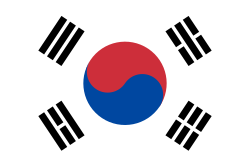Chōsen Tsūshin-shi Raichō-zu
Autor/Urheber:
The artist is Tōei Hanegawa. Collection of The City of Kobe Museum of Art, the Hajime Ikenaga Gallery
Größe:
3050 x 2322 Pixel (6226833 Bytes)
Beschreibung:
Chōsen Tsūshin-shi Raichō-zu, Japanese painting by Tōei Hanegawa, depicting the procession of the 1748
Joseon missions to Japan in Edo. Collection of The City of Kobe Museum, the Hajime Ikenaga Gallery. This is a landscape painting of the Korean communication ambassador, including the equestrian figure, marching in an orderly manner. This style was born in Edo in the 1740s and was called Uki-e because things in the painting looked three-dimensional. It can also be seen as “floating picture” in the box drawing of this figure. This figure is presumed to have been drawn based on the 10th communication envoy of the 1st year of Kannobu (1748) among the Korean correspondents who came to Japan when the general changed. The clerk and his group have finished greetings to the Shogun, crossing Tokiwabashi to return to the embassy Asakusa Honganji, and drawing a scene past Honcho 2-chome.
From the box on the storage box, you can see that this figure was the work of Kojiro (Kojiin), the second child of Tokugawa Yoshimune and the child of Munetake Tayasu, who frustrated at the age of 9 in 1753. After the death of Kojiro, it was given to the priest Masamitsu Shun of Ryoun-in, where Kojiro was buried, at the child temple of Toeizan Kaneiji in 4th year of the Holy calendar, and even from Enshoji Temple in 1961 to the Enryakuji Temple. It seems to have been dropped. There is an opinion that this figure is different from the details of the actual communication ambassador, so there is an opinion that it is regarded as a Tang people procession of the Sanno Festival, but it is not only the scene of the festival, but the communication procession is the main, and the memory of the festival is mixed. It is thought that it was drawn.
Kommentar zur Lizenz:
|
Public domainPublic domainfalsefalse
|
 |
Dieses Werk ist gemeinfrei, weil seine urheberrechtliche Schutzfrist abgelaufen ist.
Dies gilt für das Herkunftsland des Werks und alle weiteren Staaten mit einer gesetzlichen Schutzfrist von 70 oder weniger Jahren nach dem Tod des Urhebers.
 Parallel zu dieser Lizenz muss auch ein Lizenzbaustein für die United States public domain gesetzt werden, um anzuzeigen, dass dieses Werk auch in den Vereinigten Staaten gemeinfrei ist. Beachte bitte auch, dass einige wenige Länder eine Schutzfrist von mehr als 70 Jahren haben: in Mexiko sind es 100 Jahre, 95 in Jamaika, 80 in Kolumbien; Guatemala und Samoa haben jeweils 75 Jahre, Werke aus der Sowjetunion haben 74 Jahre Schutzfrist für bestimmte Autoren. Diese Datei ist eventuell nicht gemeinfrei in den genannten Ländern, die darüber hinaus nicht den Schutzfristenvergleich anwenden. Die Elfenbeinküste hat eine allgemeine Schutzfrist von 99 Jahren und in Honduras sind es 75 Jahre, aber in diesen Ländern wiederum wird der Schutzfristenvergleich angewandt. Parallel zu dieser Lizenz muss auch ein Lizenzbaustein für die United States public domain gesetzt werden, um anzuzeigen, dass dieses Werk auch in den Vereinigten Staaten gemeinfrei ist. Beachte bitte auch, dass einige wenige Länder eine Schutzfrist von mehr als 70 Jahren haben: in Mexiko sind es 100 Jahre, 95 in Jamaika, 80 in Kolumbien; Guatemala und Samoa haben jeweils 75 Jahre, Werke aus der Sowjetunion haben 74 Jahre Schutzfrist für bestimmte Autoren. Diese Datei ist eventuell nicht gemeinfrei in den genannten Ländern, die darüber hinaus nicht den Schutzfristenvergleich anwenden. Die Elfenbeinküste hat eine allgemeine Schutzfrist von 99 Jahren und in Honduras sind es 75 Jahre, aber in diesen Ländern wiederum wird der Schutzfristenvergleich angewandt.
|
|
Es wurde festgestellt, dass diese Datei frei von bekannten Beschränkungen durch das Urheberrecht ist, alle verbundenen und verwandten Rechte eingeschlossen.
|
https://creativecommons.org/publicdomain/mark/1.0/PDMCreative Commons Public Domain Mark 1.0falsefalse
Weitere Informationen zur Lizenz des Bildes finden Sie hier. Letzte Aktualisierung: Wed, 13 Jan 2021 08:17:23 GMT
Relevante Bilder
Relevante Artikel
Joseon Tongsinsa
Als Joseon Tongsinsa wird die Entsendung einer diplomatischen Delegation des Joseon-Reichs nach Japan genannt, die das Ziel hatte, nach dem Ende des Imjin-Kriegs (1592–1598) auf Betreiben des japanischen Tokugawa-Shōgunat die Feindseligkeiten zwischen den beiden Reichen zu beenden und für Frieden zu sorgen.
.. weiterlesen


